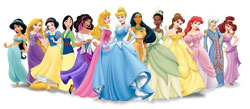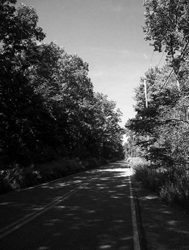Walt Disney created a cartoon empire that has been admired since he introduced the world to Mickey Mouse in 1928. While it is nearly impossible for many to think of The Walt Disney Company in a poor light, most of their famous films have very dark roots.
Released in November of 1987, “The Little Mermaid” tells a tale of a mermaid princess named Ariel who falls in love with a human prince named Eric. In the end, the two live happily ever after, as most Disney princesses do. The original story, written by Hans Christian Andersen, was adapted by The Walt Disney Company and while the story began in the same fashion, not much else aligned. The little mermaid does save the prince from a shipwreck and she does seek out a sea witch to exchange her voice for legs.
Essentially, every other element of Andersen’s tale was changed by The Walt Disney Company to appeal to their target audience. In Andersen’s version, the little mermaid must die if she fails at making the prince fall in love with her while in Disney’s version, she simply changes back into a mermaid. There is also a catch to gaining the legs: Andersen’s little mermaid has the unpleasant sensation of stepping on shards of glass when she walks.
Much like the Disney rendition, the prince is involved in a wedding ceremony with another woman. In Andersen’s tale, the prince ends up marrying the other woman. Under the impression that she has failed, the little mermaid is then told there is a loophole to her immediate death. Senior English major Rachel Fox said that she is most diturb by this original tale.
‘The Little Mermaid’ while a classic is hardly true to Andersen’s tale. If she kills the prince with a knife and lets his blood drip on her feet, she can live. If she does not kill the prince, the sea witch kills her,” Fox said. Unable to murder the prince, the little mermaid is commits suicide by jumping into the ocean at which point she turns to sea foam.
This is not the only princess tale which The Walt Disney Company has altered. Cinderella, perhaps Disney’s most iconic princess, also had a few grim details removed before The Walt Disney Company produced their 1950 film. Written by the Brothers Grimm, the tale involves Cinderella being forced to cater to her stepmother and stepsisters.
Although their is no true gruesome act involving Cinderella herself, her stepsisters are guilty of a disgusting action. In order to fit into the glass slipper, Cinderella’s one stepsister cuts off her toes while the other cuts off her heel.
Eventually, Cinderella and her prince do celebrate their marriage with an elaborate wedding, however The Walt Disney Company made another alteration to this part of the fairy tale. The two stepsisters realize they have to now cater to Cinderella since she is of royalty and attend the wedding to make their relationship better. Upon arrival, Cinderella’s two stepsisters have their eyes pecked out by birds. Gruesome? Yes. Necessary? No.
According to a 2013 article published by The Huffington Post, Giambattista Basile’s tale of “Sleeping Beauty” had to be changed for many disturbing reasons. Basile’s story begins when a king wanders into Sleeping Beauty’s castle and finds her unconscious in her bed. Rather than trying to wake her, he rapes her.
She does not wake up by a true love’s kiss like the Disney version portrayed; she instead wakes up after she gives birth to twin children. Here comes the real plot twist: the king is married to someone else. When the king’s wife finds out about Sleeping Beauty, she tries to burn her at the stake. The wife also tries to have the twins killed, cooked and fed to her husband.
Disney has even changed a true story to better fit their demographics. According to the National Park Service, Pocahontas did in fact save Englishman Captain John Smith by placing her head over his just like the Disney movie portrayed, however, not much more of the Disney tale rings true.
“I just wrote an essay about how much the Disney version of Pocahontas changed from the actual true tale of Pocahontas,” a senior communication major Becca Zidik said. “She was eleven years old and was not beautiful. John Smith was captured right off the ship and Pocahontas saved him from being killed. That is how they met; there was no love interest between the two. I understand Disney needed a nicer story but to Native Americans, the twist in the tale could be seen as disrespectful.”
Most of the Disney princesses’ stories have been altered, but The Walt Disney Company felt compelled to change other stories as well. Disney’s “The Jungle Book” follows the adventures of a boy named Mowgli who was raised in the woods and sings songs with a dancing bear.
Rudyard Kipling’s original tale also included Mowgli but in a much more depressing situation. After being raised in the jungle, Mowgli tries to return to society but is rejected by the town. Mowgli turns to an elephant for help and the animal winds up killing the entire town.
Associate English Professor Lisa Vetere suggested to view the works of Marina Warner for more insight on how The Walt Disney Company changed the classic fairy tales.
Warner, whose life work involves the study of authors such as the Brothers Grimm and Hans Christian Anderson wrote in her 1994 novel, From Beast to Blonde, “There is nothing in the least childlike about fairy tales.”
Thankfully, Disney did decide to change these once torturous tales into pleasant movies that people of all ages can appreciate. If they had not, the world would never have seen Cinderella’s castle in Disney World or may never have heard the catchy “Part of Your World” tune.
Disney has been a part of growing up for children around the world and the magic carries on into adulthood. Next time you see your favorite princess though, remember the true tale of her story.
PHOTO COURTSEY of fanpop.com.




